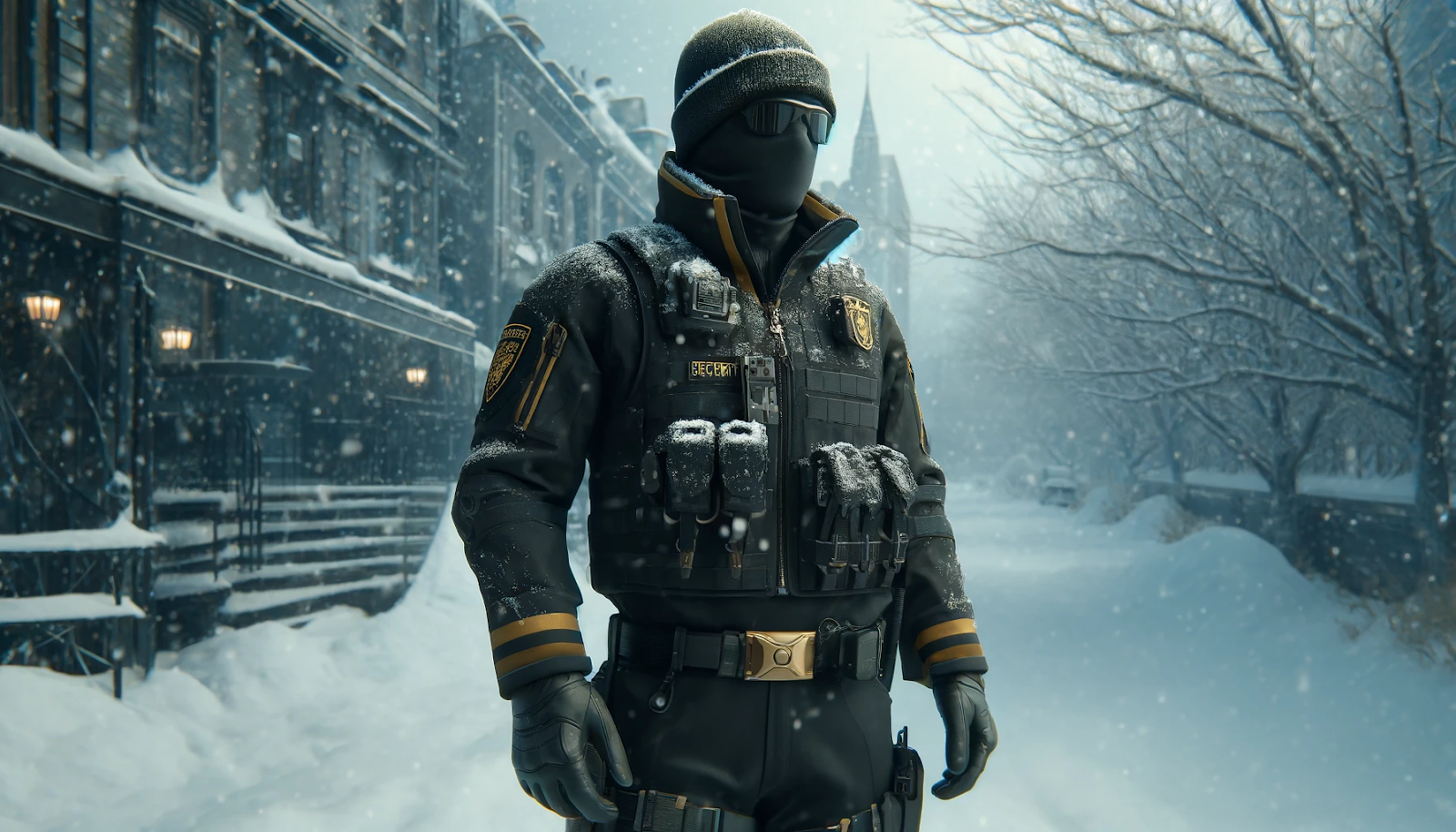Security personnel often face challenging conditions while on duty, particularly during the colder months. Ensuring their safety and well-being is crucial for effective performance. This blog post offers practical advice on protective measures and clothing recommendations for guards working in cold conditions, aimed at property managers, chief security officers, and security company hiring managers.
Importance of Cold Weather Safety
Cold weather can pose significant risks to security personnel, including frostbite, hypothermia, and reduced dexterity. Proper preparation and appropriate gear are essential to maintaining their health and operational efficiency.
Essential Protective Measures
1. Layering
Layering is a critical strategy for staying warm. It allows guards to adjust their clothing based on activity and temperature changes.
- Base Layer: Wicks moisture away from the skin. Look for materials like merino wool or synthetic fabrics.
- Mid Layer: Provides insulation. Fleece and down are excellent choices.
- Outer Layer: Protects against wind and precipitation. Opt for waterproof and windproof materials like Gore-Tex.
2. Footwear
Cold weather demands insulated, waterproof boots to keep feet warm and dry. Features to consider:
- Insulation: Look for boots with Thinsulate or similar materials.
- Waterproofing: Ensure the boots are made with waterproof membranes.
- Traction: Non-slip soles to prevent falls on icy surfaces.
3. Headgear
A significant amount of body heat is lost through the head. Appropriate headgear is essential.
- Insulated Hats: Choose wool or synthetic insulated hats.
- Balaclavas: Offer full-face protection for extremely cold conditions.
- Ear Protection: Earmuffs or insulated ear covers can prevent frostbite on the ears.
4. Hand Protection
Hands are vulnerable to cold and need proper insulation.
- Gloves: Insulated, waterproof gloves are a must.
- Liners: Thin glove liners can provide additional warmth and can be worn under thicker gloves.
- Heated Gloves: Battery-operated heated gloves are an option for extremely cold environments.
5. Body Warmers
Bodywarmers and heat packs can be a lifesaver in freezing temperatures.
- Heat Packs: Disposable heat packs for hands and feet.
- Body Warmers: Rechargeable body warmers can be placed in pockets.
Clothing Recommendations
Tops and Bottoms
- Thermal Underwear: Essential for the base layer to trap body heat.
- Insulated Jackets and Pants: Look for down or synthetic insulation.
- Waterproof Shells: Necessary for protecting against snow and rain.
Additional Accessories
- Scarves and Neck Gaiters: Protect the neck and lower face.
- Socks: Wool or thermal socks are vital. Consider layering thin liners under thicker socks for added warmth.
- Eye Protection: Sunglasses or goggles to protect against snow glare.
Practical Tips for Cold Weather Duty
- Stay Hydrated: Cold weather can be dehydrating. Encourage guards to drink plenty of fluids.
- Take Breaks: Regular breaks in a warm environment can prevent cold-related injuries.
- Monitor for Symptoms: Be vigilant for signs of frostbite and hypothermia, such as numbness, shivering, and disorientation.
- Plan Routes: Choose patrol routes that minimize wind exposure and allow quick access to warm areas.
- Emergency Supplies: Ensure guards carry emergency supplies, including blankets, energy bars, and a first aid kit.
Frequently Asked Questions (FAQs)
Q1: How can guards prevent frostbite during long shifts?
A1: Ensure they have proper layered clothing, especially insulated gloves and boots, and take regular breaks in warm environments.
Q2: What materials are best for base layers?
A2: Merino wool and synthetic fabrics are excellent for wicking moisture away from the skin.
Q3: Are heated gloves worth the investment?
A3: Yes, especially in extremely cold conditions, as they provide consistent warmth.
Q4: How often should guards hydrate in cold weather?
A4: Regularly, cold weather can be just as dehydrating as hot weather.
Q5: What are the signs of hypothermia to watch for?
A5: Shivering, slurred speech, confusion, and lack of coordination.
Q6: Can regular boots be used with thick socks instead of insulated boots?
A6: Insulated boots are recommended as they are specifically designed to retain heat and keep feet dry.
Q7: What should be included in an emergency cold weather kit?
A7: Blankets, heat packs, high-energy snacks, water, and a first aid kit.
.png)
.png)
.png)

.png)
.png)

.png)
.png)
.png)
.png)
